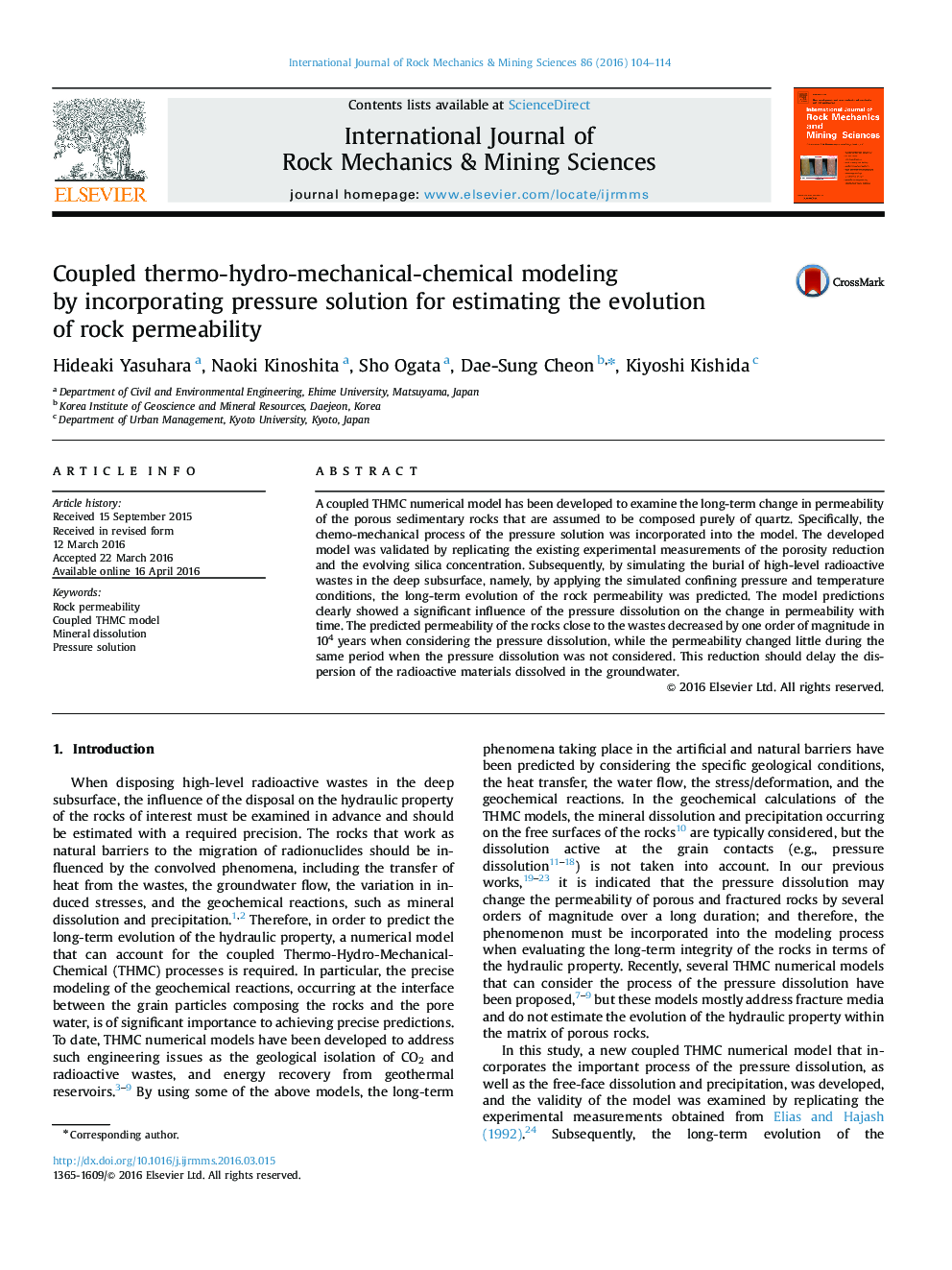| Article ID | Journal | Published Year | Pages | File Type |
|---|---|---|---|---|
| 808949 | International Journal of Rock Mechanics and Mining Sciences | 2016 | 11 Pages |
•A coupled THMC numerical model was developed to predict the long-term change in permeability.•The developed model considers the pressure solution.•The model was validated by replicating the existing experiments.•The model enables the evolution of rock permeability to be predicted under arbitrary pressure and temperature conditions.
A coupled THMC numerical model has been developed to examine the long-term change in permeability of the porous sedimentary rocks that are assumed to be composed purely of quartz. Specifically, the chemo-mechanical process of the pressure solution was incorporated into the model. The developed model was validated by replicating the existing experimental measurements of the porosity reduction and the evolving silica concentration. Subsequently, by simulating the burial of high-level radioactive wastes in the deep subsurface, namely, by applying the simulated confining pressure and temperature conditions, the long-term evolution of the rock permeability was predicted. The model predictions clearly showed a significant influence of the pressure dissolution on the change in permeability with time. The predicted permeability of the rocks close to the wastes decreased by one order of magnitude in 104 years when considering the pressure dissolution, while the permeability changed little during the same period when the pressure dissolution was not considered. This reduction should delay the dispersion of the radioactive materials dissolved in the groundwater.
